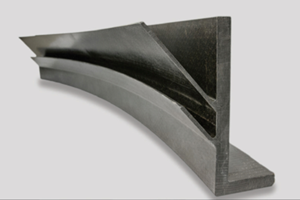In-mold Preforming Cost-justifies Closed Molding
Computer-controlled robots spray preforms directly into the part tool, a running start for closed molding.
When boatbuilder Sea Ray investigated closed molding methods in the late 1990s, existing preforming methods were not cost-effective for building the company's wide range of pleasure boats. The company considered hand layup of preforms too labor-intensive. In addition, preforming materials — conformable mat and stitched fabrics — were expensive. Even more expensive were the dedicated, net-shape preforming molds. The alternative, sprayup of chopped glass preforms, was little more appealing. While faster in production, the sprayup technique would require even greater capital investment in robots, as well as tools made with air-permeable metal screen and the associated vacuum systems, with custom-designed plenums and baffling, and other related equipment. These considerations drove a corporate decision to invest in a more cost-effective preforming system, says Scott Lammers, executive director of manufacturing technology for Sea Ray (Knoxville, Tenn., a business unit of the Brunswick Corp.'s Boat Group). The company needed a more effective method to accommodate its boat size range (from small 18-ft/5.5m sport boats to 68-ft/21m yachts). The result was RIMFIRE.
Short for Robotic In-Mold Fiber Reinforcement, RIMFIRE (pats. pend.) is a robot-based system, which borrows the concept of robotic application from traditional sprayup preforming, but bypasses entirely the need for preforming tools. The system's heart is the working end of the robot arm, called the "end effector." It consists of three integrated components: a dual-sided, servo-motor-driven chopper gun capable of putting out 9 kg/20 lb or more of glass per minute; a binder mixer/spray head; and a heating system for the binder, featuring a pair of flame burners fueled by remote bottled propane gas or natural gas. Temperatures at the burners can be as high as 538°C/1,000°F and the heat zone temperature can be varied from 93°C/200°F to 204°C/400°F. The end effector chops dry gun roving, combines it with a powdered binder, then mixes and sprays the combination directly over the gel coat in the part mold. "You just spray it in the mold and you're done," Lammers says. "You don't touch it again."
GETTING THE REACH RIGHT
Any robot with the requisite end effector and reach can be employed for RIMFIRE work. Sea Ray has set up robots made by the Manufacturing Automation Div. within Automation Technology Group of ABB Inc. (Auburn Hills, Mich.) and Nachi Robotic Systems Inc. (Novi, Mich.) and is currently building a system using a robot from Fanuc Robotics (Rochester Hills, Mich.). "Reach" refers primarily to the robot's ability to adapt to part geometry, rather than part size. The most critical elements of reach are the draft (the angle between the side and bottom of the mold) and the aspect ratio of width to depth, or height. Hull length is not a major factor because the robot is positioned in a stationary cell, and the mold moves through the cell while the robot operates. For extremely lengthy molds, multiple robots can be ganged inline to facilitate fast, thorough coverage.
|
RIMFIRE robots have successfully applied up to 10 oz/ft2 (0.31 g/cm2) of preform materials onto a 5-ft/1.5m high sidewall having slightly less than 3° draft with an 8.5-ft/2.6m wide hull in a concave mold. "Once the draft opens up more than 3° or 4°, we can preform about any size the robot can reach," Lammers says. "It's a versatile process with many options. In some cases, we can index the mold sideways, or rotate it so the robot is not spraying onto a vertically oriented surface," he explains. For a particularly tight radius, Sea Ray may hand lay glass mat into the angle before the mold enters the preform cell, so the robot spray doesn't bridge the angle and leave the area unreinforced and vulnerable to structural damage. |
There are exceptions: Some complex geometries with both concave and convex sections or severe aspect ratios present areas the robot simply can't reach. For this reason, Sea Ray has not yet applied the process to decks. "Some of our decks might have sections about 4-inches [102-mm] wide and 2-ft [0.61m] deep, which is nearly impossible for the robot to reach into," Lammers explains. An option for such geometries is to spray the preform over a convex mold and then move the preform into the main mold, a procedure similar to traditional preforming.
BASICALLY, IT'S THE BINDER
The real secret to RIMFIRE success, however, is the binder, a blend of powders that can be tailored to produce desired properties. "Basically, it is a thermosetting material that has thermoplastic-like properties," says Lammers. The material melts when heated in the preforming stage. But once cooled and solidified, it will not re-melt, and it retains its physical and mechanical properties during the heat/cure cycle.
In raw form, the different binder powders are stored separately in hoppers. Under computer control, powders are metered into a mixing tube that conveys the blend of mixed resin powders, in the required percentages for the weight of the glass specified for an individual application, to the chopper/spray head. The glass and binder pass through the heat zone together. As it is exposed to the heat, the binder activates, becoming tacky and interspersing with the glass as it exits the gun, causing the fibers to adhere to each other and to the mold surface, where it cools and solidifies.
For the system to work properly, all preform fibers and sizings as well as the matrix resins, must be compatible with the binder. Therefore, selection of glass fiber type and fiber sizing are important factors in preform design. "The type of sizing on the glass can make the material stiffer or softer. This affects how the roving runs through the chopper gun," Lammers says. "So the set up of the rollers and blades may vary for different types of material." All incoming raw materials are qualified using a standard set of tests. Before production starts, coupon samples of the proposed layup are tested for mechanical properties. Various types of E-glass from PPG Industries (Pittsburgh, Pa.), Saint-Gobain Vetrotex (Valley Forge, Pa.) and Owens Corning (Toledo, Ohio) have run successfully through the robot. For the matrix resin, a low-profile polyester resin system from AOC Resins (Collierville, Tenn.) is used. The preform system also has worked with vinyl ester and polyurethanes. Epoxy resins have not yet been run, but Lammers anticipates no difficulties, with the right glass and sizing.
Altair Engineering (Troy, Mich.) or equivalent finite element analysis (FEA) software is used to determine the laminate materials and architecture that best suit the requirements of the entire boat structure. The property values of the materials to be used are factored into that analysis. The preform design is built into a computer-aided design (CAD) file. Once the design file is ready, the robot's deposition rate is set by preprogramming the process software, which calibrates the yield of the roving, the speed of the robot arm/end effector and the servo motor speed on the chopper gun.
While the part tooling is being made, robot programming is done offline using software such as that provided by Delmia Corp. (Auburn Hills, Mich.). When the mold tooling is ready, the software can be downloaded into the robot controller for immediate start of production. "Programming offline saves cost in overtime that might otherwise need to be expended to generate programs after regular working hours, so as not to interrupt production," says Lammers.
Since RIMFIRE production began, early in 2003, Sea Ray's three plants in Tennessee have built more than 5,000 hulls for its 18-ft to 24-ft (5.5m to 7.3m) sport boats. Cost savings have been enormous. To hand assemble a hull preform using dry mat and fabric would take three technicians 45 minutes, or 2.25 worker hours. Using RIMFIRE for a hull of the same size, says Lammers, one part-time operator and one robot can build a preform in about 20 minutes. Two robots can cut the time to 10 to 15 minutes. Use of gun roving reduces material cost by about 50 percent, compared to mat and fabric. Typically, chopped fibers and binder are sprayed directly onto the cured gel coat, with no veil or barrier coat in between. According to Sea Ray, the process has no negative effect on the Class A finish of the gel coat, a standard polyester system from one of several suppliers.
"Furthermore, layup of rolled goods usually results in a lot of scrap material that gets trimmed away," Lammers adds. "Applying the chopped material robotically right to the shape not only cuts the amount of scrap, but it's cheaper scrap." Since the preform is built right on the tool, the process eliminates the step required to transfer the finished preform from a manufacturing station to the part mold, so there is no risk of damage and no extra space is required to store preforms or preform tools.
RIMFIRE + ZIP RTM
In production, RIMFIRE can be used with most available closed molding options, including standard resin transfer molding (RTM) and various methods of vacuum-assisted resin transfer molding (VARTM) and vacuum-assisted resin infusion molding (VARIM). Sea Ray currently uses ZIP RTM (zero injection pressure resin transfer molding) process, licensed from Plastech Thermoset Tectonics (Gunnislake, Plymouth, U.K.) and Plastech's North American partner JHM Technologies (Fenton, Mich.). ZIP RTM motivates resin flow with both vacuum and injection pressure, slightly favoring the vacuum, which results in less stress on the mold. This permits the use of less costly semi-rigid tooling. A multi-station inline system, ZIP RTM processes several lower molds simultaneously, but requires only two upper mold halves per line, keeping mold manufacturing costs to a minimum. (photos show construction of Sea Ray's 20-ft/6m 205 sport boat hull.)
Before production starts, technicians apply Chemlease (Chem-Trend, Howell, Mich.) or equivalent semipermanent release agents to upper and lower molds. Gel coat is applied to the lower mold and allowed to cure. Meanwhile, the specified fiberglass gun roving is loaded onto pallets behind the robot. Four rovings of continuous glass, typically 112- or 113-yield, are threaded through the end effector.
In a pre-loading station ahead of the RIMFIRE preforming cell, multiaxial glass fabric is laid into tight radii in the lower mold, if called for in the FEA, to prevent bridging of the preform spray over the angle. The mold is then latched onto a computer-controlled indexing device that rides on a floor-mounted rail, and is moved into the preform cell.
An operator starts the previously downloaded software program. The binder mixing tube conveys the commingled powders through the back of the robot and into the end effector. Chopped 25.4-mm and 50.8-mm (1-inch and 2-inch) fibers and binder are deposited in a random pattern at a pre-programmed rate, as determined by the FEA analysis. This may be done in a single pass, or in multiple passes, as needed to achieve an even surface on a laminate thickness of 6.35-mm/0.25-inch or more. Conditions that influence the number of passes include part geometries, draft design and the amount of glass specified for deposit.
When the preform is complete, the mold progresses to a third station, where engineered fiberglass fabrics are hand placed to reinforce the preform. A combination of chopped strand mat and 0°/90° stitched fabric is laid into the bottom of the hull and around the chine, where the outer edge of the hull bottom joins the hull side. Multiaxial stitched or woven materials are added to other areas that will be exposed to high loads. Next, the preform overspray is trimmed off the flange of the lower mold.
The lower mold then moves to the mold closure station, where a convex upper tool, mounted in a wheeled trolley, is automatically moved into position over the lower mold by a manipulator arm on a fixed gantry. The edges of the upper and lower molds are joined and sealed, and the tooling set then moves into the resin injection station.
The ZIP RTM method feeds resin around the perimeter of the joined molds while a vacuum is pulled through a center vent in the upper mold. Resin flow is controlled by a mechanical vacuum molding pressure control (VMPC) sensor, also mounted in the upper mold. The VMPC reacts to internal pressure changes. In the event the pressure becomes positive, the VMPC sends a signal to interrupt the resin flow until the vacuum re-establishes negative pressure within the tool, and then restarts resin flow automatically.
Moved to the curing station, both the upper and lower molds are heated electrically, and the part is allowed to cure at 32°C to 38°C (90°F to 100°F) for about one hour.
In the next station, a second manipulator arm removes the upper tool, which then is returned to the closure station to be mated with the next lower mold tool. The lower mold is transported to a demolding station, where the cured hull is demolded and moved to a robotic trimming station. Meanwhile, the empty mold is returned to the pre-loading station for mold prep.
BIG BOATS AND BEYOND
Hulls for Sea Ray's larger cruisers and yachts are still open-molded in some Tennessee facilities and in three plants in Florida. The company is looking into converting these facilities to RIMFIRE and the Seemann Composites Resin Infusion Molding Process (SCRIMP). The latter is a patented VARIM process licensed by TPI International (Warren, R.I.), which substitutes for the upper tool a special resin distribution medium and silicon vacuum bag.
Sea Ray is now in the process of running tests to scale up RIMFIRE for cruisers in the 25-ft to 34-ft (7.6m to 10.4m) range. In time, it is possible that the company will employ RIMFIRE on its largest yachts (up to 68-ft/20.7m).
Licenses for RIMFIRE equipment and technology are available to custom molders outside the marine industry. Although RIMFIRE hulls are currently made in concave (female) molds, the process also works with convex (male) molds, and research is underway to incorporate longer fibers (up to 203 mm/8 inches long) and to enable spraying of fibers in directed orientations. Moreover, carbon fibers appear to be viable for RIMFIRE processing, but more R&D would be necessary before carbon preforms could be put into production.
Related Content
CAMX 2022 exhibit preview: Bally Ribbon Mills
Bally Ribbon Mills’ highlights its capabilities in design and manufacture of woven structural shapes for hybrid composite structures used in aerospace applications.
Read MoreCAMX 2022 exhibit preview: Parabeam
Parabeam’s 3D E-glass woven fabrics, particularly ParaGlass and ParaTank, continue to advance composite sandwich structures with high flexibility, strength and application versatility.
Read MoreBraskem demonstrates PP solutions using Weav3D composite lattice technology
Partnership combines Braskem’s polypropylene sheets with Weav3D Rebar for Plastics technology to address new structural, automotive applications requiring high-strength, lightweight material solutions.
Read MorePEEK vs. PEKK vs. PAEK and continuous compression molding
Suppliers of thermoplastics and carbon fiber chime in regarding PEEK vs. PEKK, and now PAEK, as well as in-situ consolidation — the supply chain for thermoplastic tape composites continues to evolve.
Read MoreRead Next
CW’s 2024 Top Shops survey offers new approach to benchmarking
Respondents that complete the survey by April 30, 2024, have the chance to be recognized as an honoree.
Read MoreFrom the CW Archives: The tale of the thermoplastic cryotank
In 2006, guest columnist Bob Hartunian related the story of his efforts two decades prior, while at McDonnell Douglas, to develop a thermoplastic composite crytank for hydrogen storage. He learned a lot of lessons.
Read MoreComposites end markets: Energy (2024)
Composites are used widely in oil/gas, wind and other renewable energy applications. Despite market challenges, growth potential and innovation for composites continue.
Read More



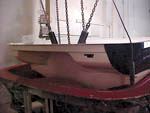
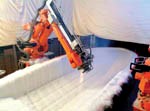
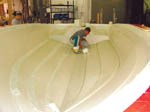
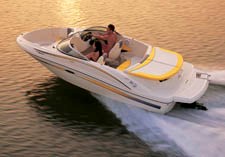
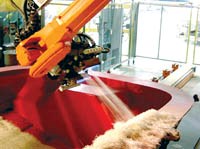
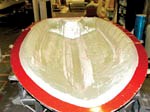

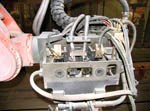
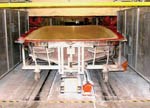
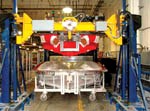
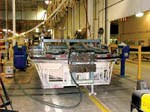











.jpg;maxWidth=300;quality=90)



